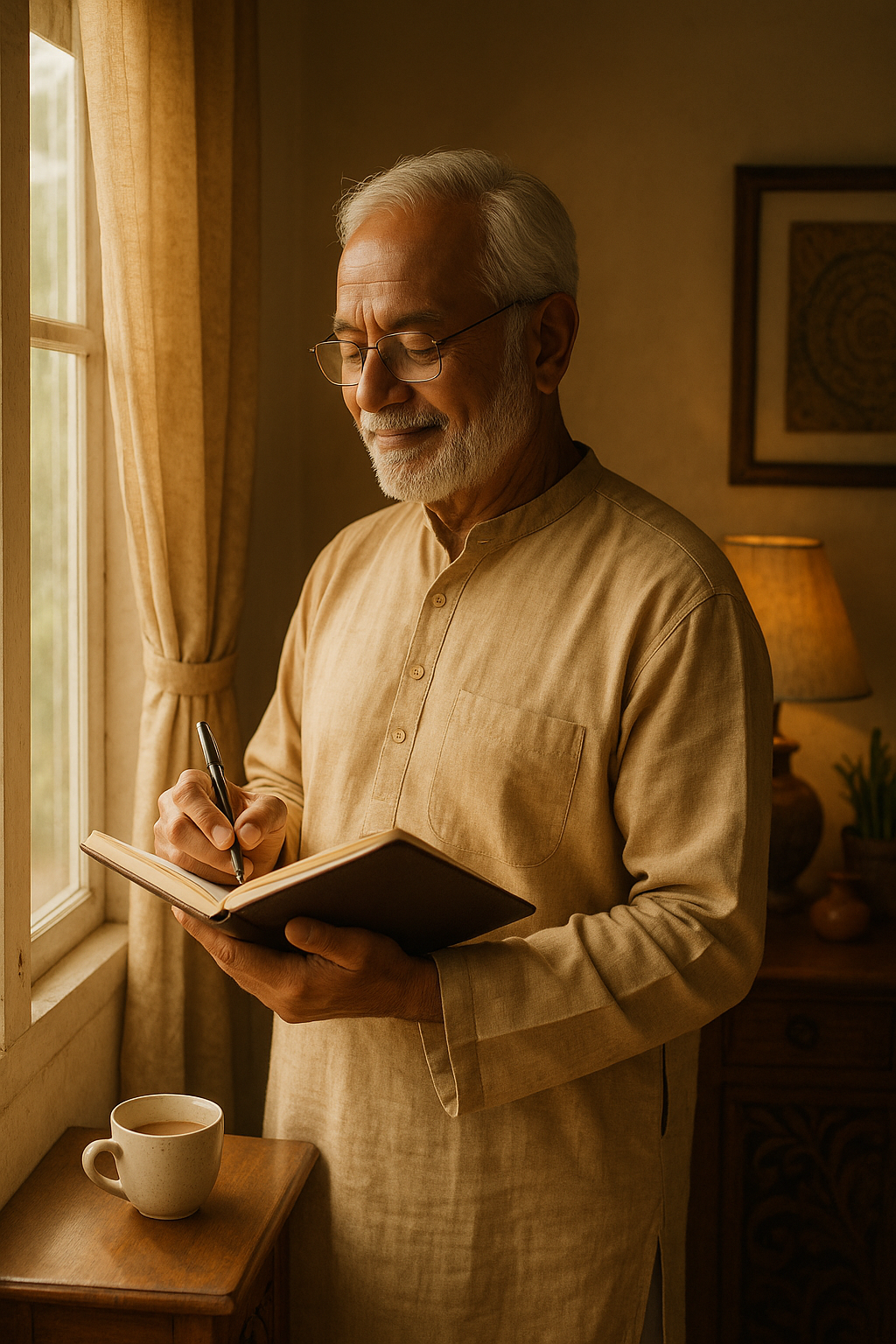
Retirement is often described as the “golden years”, a time of rest, freedom, and relaxation. But for many people, it can also bring uncertainty, confusion, or even a sense of loss. After spending decades in structured roles, retirement can feel like stepping into the unknown.
The truth is, retirement isn’t just about stopping work; it’s about reshaping your identity, rebuilding your rhythm, and realigning your purpose.
Let’s explore how to deal with this powerful life transition using simple tools that help you move from emotional discomfort to clarity and calm.
1. Why Retirement Feels Emotionally Challenging
Many people feel unprepared for the emotional impact of retirement. While your job may have ended, your thoughts, habits, and emotions still seek structure and meaning. Here are some common experiences:
- Loss of identity: “Who am I if I’m not working?”
- Emotional emptiness: No daily goals, team, or routine
- Social withdrawal: Fewer daily interactions
- Fear of irrelevance: Feeling left out of fast-moving conversations
- Anxiety about health or money: “What if something goes wrong?”
These are normal reactions. The important thing to know is that you can manage them, not by forcing yourself to “stay busy,” but by understanding how your mind responds and how to consciously redirect it.
2. What Causes Stress in Retirement?
Often, it’s not the event of retirement that causes the most stress; it’s how we think about it.
Let’s look at this with a simple thought model called the ABC Model:
- A – Activating Event: Something happens (e.g., “I retired last month.”)
- B – Belief: What you tell yourself about it (e.g., “I’m no longer useful.”)
- C – Consequence: The emotion that follows (e.g., sadness, frustration)
Now here’s the key: if you change the belief, even slightly, the emotional consequence also changes.
For example:
- New Belief: “Now I have time to do things I always postponed.”
- New Emotion: Curiosity, hope, even relief.
This small shift in mindset can change the entire experience of retirement.
3. Flipping the Script: From Problem to Possibility
Another simple technique that helps during retirement is the Flip Model, which helps you move from emotional blocks to positive action.
Here’s how it works:
- Problem: “I feel lost without a routine.”
- Outcome: “I want to feel excited to start my day.”
- Action: “I will try a morning walk and 10 minutes of journaling to begin with.”
Instead of focusing only on what’s wrong, the Flip Model helps you focus on what you want and how to begin moving toward it.
Try it yourself:
- Write one challenge you’re facing right now.
- Flip it into a clear, positive outcome.
- Choose one small action that could support that outcome today.
4. Reimagining Who You Are Now
One of the deepest struggles after retirement is the question: “Who am I now?”
Your role has indeed changed, but your identity can expand.
Ask yourself:
- What am I naturally good at?
- What gives me energy now?
- What have I always wanted to do, but postponed?
- What knowledge, skill, or life lesson could I share with others?
You’re not starting from zero. You’re starting from experience. This is your chance to create a personal mission for the next chapter of your life, one rooted in meaning, not pressure.
5. Tools to Support Your Emotional Well-being
You don’t need to do everything at once. Start with small tools that help you feel grounded and supported each day.
Relax the Body
When the body relaxes, the mind follows.
- Deep breathing: Inhale for 4 counts, exhale for 6. Repeat 3–5 times.
- Gentle movement: Try walking, yoga, or stretching. Even 10 minutes helps.
Shift the Thoughts
The way you talk to yourself matters.
- Daily journaling: Each morning, write: “What’s on my mind today?”
- Reframe limiting thoughts: If you catch yourself thinking “I’m wasting my time,” try: “I’m learning how to enjoy a new pace.”
Use If/Then Statements
These help prepare your mind for common emotional triggers:
- If I start to feel aimless in the morning,
Then I will remind myself: “I’m free to explore what brings me joy today.” - If I feel lonely in the evening,
Then I will call a friend or listen to calming music to feel connected.
These simple statements help build emotional stability over time.
6. Creating a New Rhythm for Your Day
Retirement doesn’t need a strict schedule; it needs a supportive rhythm. Think of it as a soft routine built around self-care, creativity, and connection.
Sample Rhythm:
Morning:
- Light walk or stretching
- Breathing or gratitude practice
- A quiet tea or coffee moment
Midday:
- Reading, a hobby or learning
- Call with a loved one
- Healthy meal preparation
Evening:
- Reflective journaling
- Soothing activities like music, prayer, or puzzles
- Simple plan for tomorrow
This kind of rhythm offers mental stability while keeping things light and enjoyable.
7. Don’t Go Through This Alone
Many people feel like they’re the only ones struggling with retirement. You’re not. This transition is big, and it’s okay to ask for support.
You might:
- Join a hobby or discussion group
- Volunteer or mentor younger people
- Reach out to a coach or therapist if emotions feel too heavy
Reaching out is a strength, not a weakness. You don’t need to “figure it all out” alone.
8. Final Thoughts: Retirement Is a Redirection, Not a Dead End
You are not defined by what you used to do. You are who you continue to become.
Retirement is not about fading away. It’s a space for reflection, creativity, and contribution, on your terms. It’s your time to explore not only what you want to do, but also how you want to feel.
So take a deep breath, give yourself grace, and begin again, not as who you were, but as who you’re ready to become.
*Images have been generated using AI tools




